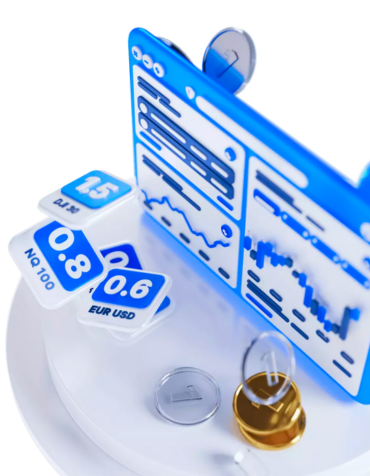We round up the best brokers that we believe offer best value for forex traders.





Trading the GBPUSD forex pair involves buying or selling it in the foreign exchange (forex) market. Here are the basic steps to trade GBPUSD:
To trade any forex pair, including GBPUSD, you'll need to open an account with a reputable forex broker. Ensure that the broker offers access to this specific GBPUSD pair.
Deposit funds into your forex trading account. The amount you deposit will determine the size of your trading positions.
Before making any trades, perform a thorough analysis of the GBPUSD pair. This analysis typically involves fundamental analysis (economic data, interest rates, geopolitical events) and technical analysis (price charts, indicators) to determine your trading strategy.
Most brokers offer trading platforms that allow you to execute trades. Familiarize yourself with the platform's interface and tools.
Choose whether you want to buy (long) or sell (short) the GBPUSD pair based on your analysis. Enter the trade order on your trading platform, specifying the amount (lot size) you wish to trade.
Executes the trade immediately at the current market price.
Sets a specific price at which you want your trade to be executed.
Sets a price at which your trade will be triggered if the market moves in a certain direction.
To manage risk, consider setting stop-loss orders to limit potential losses and take-profit orders to lock in profits at a certain price level.
Once your trade is executed, monitor the GBPUSD pair's price movement. Keep an eye on news and events that may impact the exchange rate.
When you achieve your trading objectives, either manually close the trade or wait for your predetermined take-profit or stop-loss levels to be reached.
After closing your trade, assess the outcome. Review your trading strategy and learn from both successful and unsuccessful trades to improve your skills.
Always practice proper risk management. Never risk more than you can afford to lose, and consider using leverage cautiously if available.
One strategy you can use is the breakout strategy. This involves looking for key levels of support and resistance on the GBPUSD chart. When the price breaks above a resistance level, it could be a sign that there's a potential bullish move coming up. On the other hand, if the price breaks below a support level, it could indicate a potential bearish move. To make the most profit with this strategy, you can place buy orders above resistance levels and sell orders below support levels while setting appropriate stop-loss and take-profit levels.
Another strategy is trend following. With this approach, you focus on identifying and following trends in the GBPUSD pair. You can use technical indicators like moving averages or trendlines to figure out if the trend is going upward or downward. Once you've determined the direction of the trend, you can enter trades that align with that trend by placing buy orders during an uptrend or sell orders during a downtrend.
The news trading strategy involves keeping an eye on economic news releases that affect GBP or USD currencies and taking advantage of any volatility caused by these events. For example, if there's positive news about the UK economy, it might lead to an increase in demand for GBP which could result in an upward movement in GBPUSD pair. Conversely, negative news may cause a decline in demand for GBPUSD pair. By staying updated with economic calendars and reacting quickly to news releases, you have an opportunity to maximize profit by entering trades based on market sentiment driven by these events.